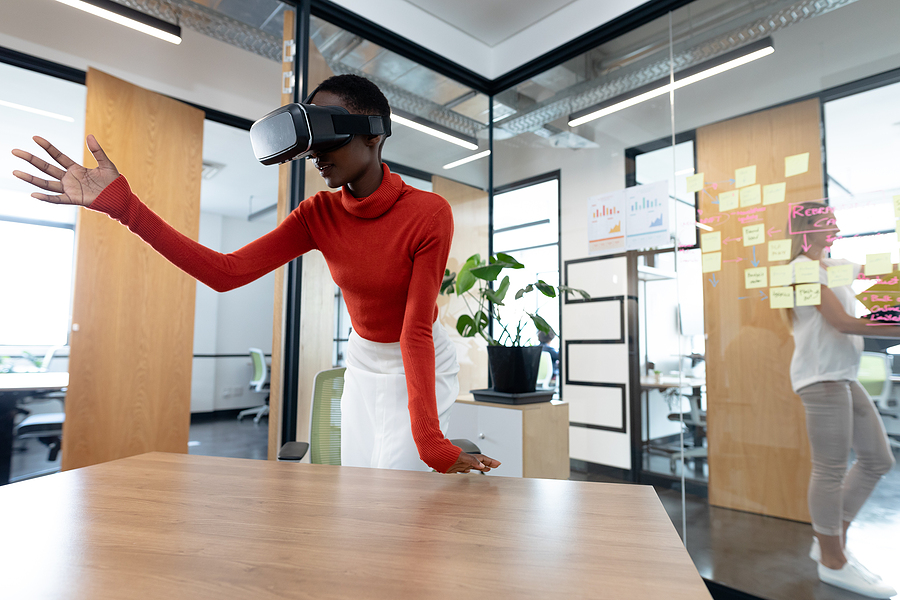In a large, open room decorated with indoor plants, five round tables are spread out on the wooden floor. Each separated table stands approximately six feet away from the other and hosts a single person. With a cup of coffee on the table, avatars of employees float mid-air.
A man dressed sharply in a blue suit is shown from the torso up. Next to him on his right, a woman in an off-color white shirt and a high-waisted wine-colored skirt is suspended mid-air. She looks ahead at a man dressed in a white button-up and a blazer “standing” in front of a podium. A screen behind supports what he’s saying with figures.
This “room” holds no trace of real humans besides a picture and voice recordings, yet it’s what future workplaces could look like as companies start the switch to virtual reality.
With COVID-19 still around, some employers have turned to a new VR program to keep their workers from going to in-person offices and events.
The program, known as Arthur, mixes virtual reality with elements of augmented reality to emulate a workplace to the best of its abilities. The employees are able to write on whiteboards, play videos through virtual monitors and create 3D flowcharts. The virtual office space allows users to interact with each other using spatial audio. To give the workers some privacy, the program offers designated areas for private conversations.
“Virtual reality offers innovative solutions that no other technology is able to accomplish,” said founder Christoph Fleischmann in conversation with Forbes. “Arthur provides enterprises with a solution capable of providing deep and meaningful collaboration.”
Arthur is being used in a variety of settings. Used a total of 1.6 million minutes in 2021, the program has found a place in workplaces dealing with energy, organizations, insurance, and finance amongst others. The Berlin-based companies’ clients include Societe Gentiale, Nestle and the United Nations.
Used in more than one sector of the United Nations, Arthur was first introduced by the International Training Centre of the International Labour Organization otherwise known as ITCILO. The training area turned to the program when they were tasked with organizing a face-to-face meeting with 100 participants during the pandemic.
“What was great about this was that it was immersive,” said Snehal Soneji, Programme Manager at ITCILO, in a showcase on Arthur’s website.“We were able to discuss and create more in 3D.”
In addition to the workplace, more companies are looking to use VR in the job recruitment process. By creating simulations of the workplace, job applicants are able to experience a typical workday at the company. They can interact with the other workers and perform the expected tasks they’re required to do virtually, allowing companies to see how well they would fit in. Businesses such as BMW and Johnson & Johnson have already led the way in using VR in the hiring process.








